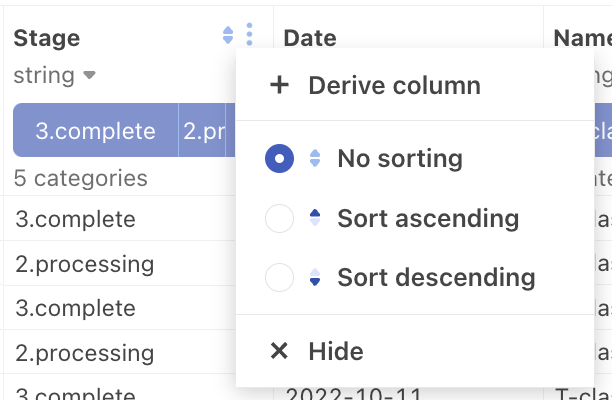If you’re teaching with Observable, you’re likely thinking – or trying not to think about – your upcoming classes. Our engineers have been busy over the past few months releasing great features that we want to spotlight while you’re planning your next semester of instruction. Make sure you contact us about our education discount!
We’ve launched an update to Observable Plot, including tree marks, tip marks, and plot.auto, a new feature that automatically chooses the best mark type based on your data. We’ve also launched a great new resources site.
You can use Plot to get students familiar with the concepts of data viz and Observable before they begin coding. They can learn by engaging with inputs, editing code in tinker mode, or converting Plot to Javascript directly inside the notebook.
Learn more about the Geo mark, a recent feature we've added to Observable Plot.
The chart cell is a brand new cell type that uses Observable Plot to intelligently create visualizations. You just need a data source and at least one attribute to start exploring data visually without writing a line of code.
The chart cell acts as a springboard for more detailed instruction. You can easily teach high-level concepts using Observable Plot and then convert the cell to editable code for further exploration.
Chart cell makes it possible for learners of all experience levels to quickly create data visualizations.
Here’s another new cell type to enjoy! Create a data table cell from a file attachment or JavaScript array by creating a new cell and selecting "Data table" from the cell menu. Simply click on a cell in the table for a menu of useful filters.
 You can explore and clean data right in a data table cell by clicking the three dots menu at the top of a cell and adding a derived column of data using a code editor right inside the cell.
You can explore and clean data right in a data table cell by clicking the three dots menu at the top of a cell and adding a derived column of data using a code editor right inside the cell.
We recently launched support for DuckDB, so you can query any tabular data with SQL. DuckDB supports a variety of popular file formats, including CSV, TSV, JSON, Apache Arrow, and Apache Parquet. Our DuckDB database client implementation is based on previous work by the CMU Data Interaction Group.
Visit our site to see the increasing number of ways you can connect to data with Observable.
We can’t say enough about how useful forking is for teaching with Observable. Do you use forking in class?
“Beforehand, I’ll create two notebooks: a skeleton version and a fully complete version with the answers. During class, we work through the skeleton version together. After the lectures, I will publish the full version.”
Jon Froehlich, Associate Professor in Computer Science at the University of Washington
This powerful feature to share and maintain teaching content, easily distribute assignments, and provide low-risk learning opportunities for students. They can fork worked examples and deconstruct or build on them for class projects.
Tags can help you and your students organize your classroom and discover new examples. When you click a tag, Observable searches all the notebooks in the community. You can use unique or course-specific tags to group notebooks within a team or classroom (ex: dv344-sec1, final-pt2, and team starbug), or more general tags that surface concepts across the Observable community (ex: stats, inputs, and plot), giving students resources beyond the classroom.
Follow users and teams to see their notebooks in the feed on your Observable homepage. Observable creators can provide inspiration and support for your classroom. You can also use this feature to check out skills grads will need to be competitive, stay current with the work of industry experts, and engage real-world examples.
Guests can be added to your workspace with restricted access to notebooks, secrets, and databases. You can add colleagues from your institution, project stakeholders, and others who may need limited access to your workspace without giving up control of materials.
You’ll find plenty of ways to engage students and manage classwork with Observable. As you’re planning your semester, consider how you might incorporate these useful features into your upcoming semester. Adding them can have a big impact!
You can always learn more about recent features on our blog, review the latest updates in our release notes, and subscribe to our newsletter.
